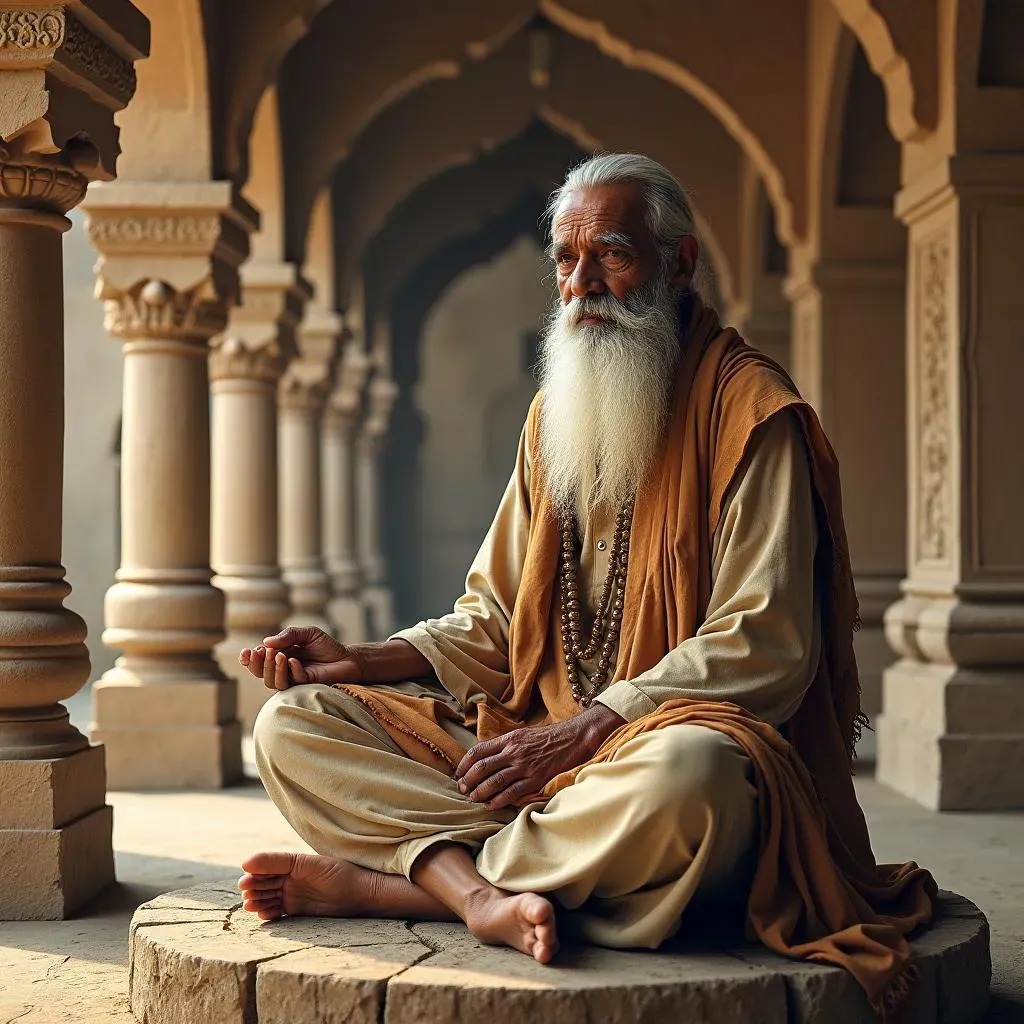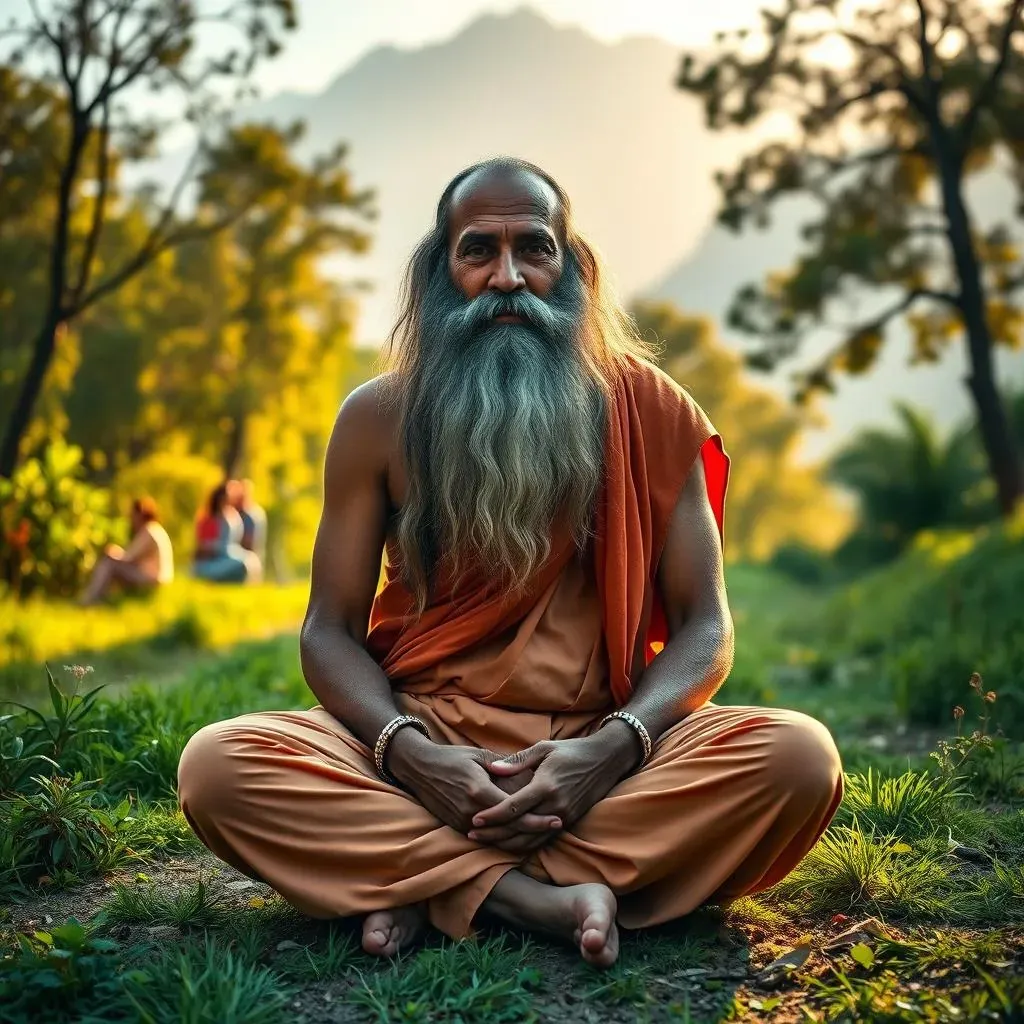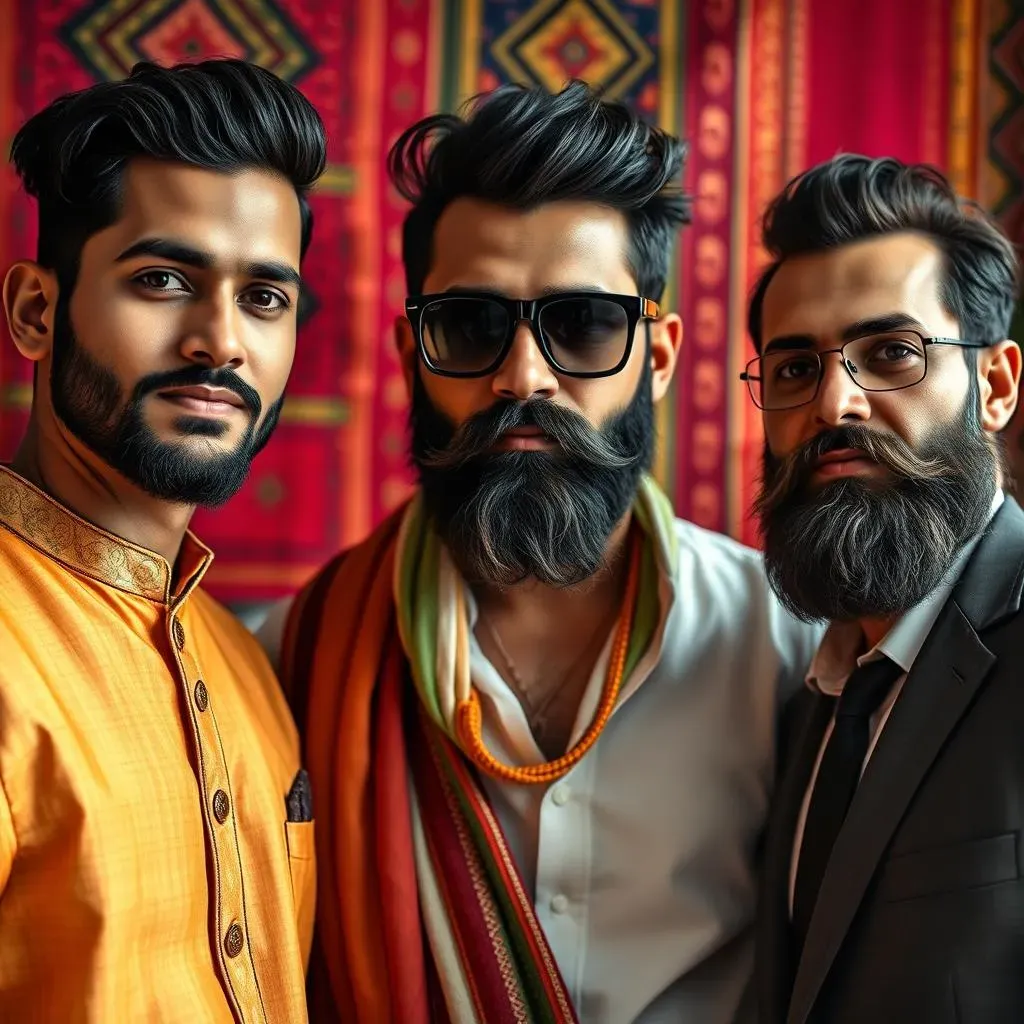Table of Contents
From ancient scriptures to modern-day runways, beards have played a significant role in shaping Indian culture. This exploration into "beards in Indian culture" isn't just about facial hair; it's about uncovering deeply rooted traditions, religious significance, and evolving social perceptions. We'll journey through time, examining how beards have symbolized wisdom, masculinity, and spirituality across various religious and social groups. Prepare to discover the rich tapestry of history woven into every strand, from the revered beards of religious leaders to the modern-day adoption of beards as a statement of personal identity. This article will delve into the historical context of beards in Indian society, explore their connection to religious practices, and finally, analyze how contemporary interpretations are reshaping the meaning of facial hair in India today. Get ready to unravel the fascinating story behind the beard in Indian culture!
The Historical Significance of Beards in Indian Culture
The Historical Significance of Beards in Indian Culture
Ancient Indian Texts and the Symbolism of Beards
Hey, so you're diving into the fascinating world of beards in ancient India? That's awesome! I've been researching this for a while, and it's a real rabbit hole. Think about the ancient scriptures – the Vedas, the Puranas, even the epics like the Mahabharata and Ramayana. They're brimming with descriptions of kings, sages, and gods, often sporting magnificent beards. These weren't just random facial hairs; they symbolized wisdom, power, and spiritual attainment. A long, well-groomed beard was a mark of respect, a sign that someone had dedicated their life to learning and understanding. Imagine the weight of those centuries, the stories whispered through those beards! It's like each strand holds a piece of history.
For example, many depictions of Hindu deities showcase them with impressive beards, further solidifying the connection between beards and divinity. This wasn't just about aesthetics; it was about projecting an image of authority and spiritual mastery. The beard became a visual representation of the wisdom and experience accumulated over a lifetime. This is a far cry from the modern notion of beards as a simple fashion statement. It's really about understanding the deeper cultural meaning. Check out some amazing pictures of Indian beard styles here to get a visual sense of the diversity of styles throughout history.
Ancient Text | Beard Symbolism | Associated Figure |
|---|---|---|
Vedas | Wisdom, Longevity | Rishis (sages) |
Mahabharata | Power, Kingship | Krishna, Bhishma |
Ramayana | Spiritual Attainment | Vishvamitra |
Beards in Royal Courts and the Elite
Beyond the spiritual realm, beards also held significant status in the royal courts and among the elite classes of ancient India. Think of the powerful emperors and maharajas – their beards weren't just facial hair; they were a visible marker of their authority and power. A well-maintained beard was a symbol of their regal status, signifying their wealth, power, and influence. It was a visual affirmation of their position in society, a way to instantly command respect and obedience. The style and grooming of the beard itself could even reflect the ruler's personality and reign. A meticulously groomed beard might suggest a disciplined and organized ruler, while a more wild, untamed beard could imply a more forceful or unconventional leader. For a glimpse into the diversity of beard styles for Indian men, you can check out this link: Indian beard styles for men.
Interestingly, the upkeep of these royal beards often involved elaborate rituals and ceremonies, further highlighting their importance. Specialized barbers and attendants were employed to ensure the beard was perfectly groomed, reflecting the ruler's commitment to maintaining their image and authority. The use of oils, perfumes, and other grooming products was common, turning beard maintenance into a ritualistic process. It wasn’t just about looking good; it was about reinforcing their position within the social hierarchy. The beard, therefore, wasn't just an accessory; it was a powerful symbol of social standing. This is a fascinating contrast to the more casual approach to beards seen today. And for those interested in modern Indian beard styles for work, this is a good resource: Indian beard styles for work.
- Royal status and power
- Symbol of authority and influence
- Reflection of ruler's personality
- Elaborate grooming rituals
Beards and Religion: A DeepRooted Connection in Indian Spirituality
Beards and Religion: A DeepRooted Connection in Indian Spirituality
So, you're looking at the link between beards and religion in India? That's a fascinating area! It goes way beyond just personal style; it's deeply entwined with spiritual beliefs and practices across different faiths. Think about Sikhism, for example – the beard is a fundamental article of faith for Sikh men, a visible symbol of their commitment to their religion. It's not just about outward appearance; it’s a powerful expression of their identity and devotion. It's considered sacred, and maintaining it is an important part of their daily routine. For more on Sikh beard styles, check out this resource on Indian beard styles.
In Hinduism, too, beards have held symbolic value for centuries. Many depictions of Hindu gods and sages show them with impressive beards, often associated with wisdom, asceticism, and spiritual power. Think of the images of yogis and gurus – their beards often contribute to their aura of holiness and spiritual authority. It's a visual cue that connects them to a long tradition of spiritual practice and devotion. The beard becomes a symbol of their journey of self-discovery and connection to the divine. For those interested in beard care, here's a link: Indian beard care.
Religion | Beard Significance | Associated Figures |
|---|---|---|
Sikhism | Article of faith, symbol of devotion | Guru Nanak, other Sikh Gurus |
Hinduism | Wisdom, asceticism, spiritual power | Various deities, sages, yogis |
Islam | Sunnah (recommended practice), symbol of piety | Various religious figures |
Beyond Sikhism and Hinduism, Islam also has a tradition of associating beards with piety and religious devotion. Growing a beard is considered Sunnah, a recommended practice for Muslim men, although not mandatory. It's seen as a way to follow the example of the Prophet Muhammad, and it holds symbolic meaning for many devout Muslims. This adds another layer of cultural and religious significance to the discussion about beards in India, given the significant Muslim population in the country. The beard, therefore, becomes a multifaceted symbol that intersects with religious, social, and personal identity. If you're interested in learning more about beard styles for Indian weddings, check this out: Beard styles for Indian weddings.
The significance of beards in various religious contexts highlights the complex interplay between faith, identity, and personal expression. It’s not just about the hair on one's face; it’s about the deeper meaning and symbolism attached to it within the context of specific religious beliefs. The diverse religious landscape of India makes this a particularly rich area of study, demonstrating the diverse ways in which beards have been understood and valued across different traditions. Looking for ways to shape your beard? Check this out: Indian beard shaping.
- Beards as a symbol of religious identity and devotion
- The role of beards in different religious practices
- The interplay between religious beliefs and personal expression of faith
- The diverse perspectives on beards across various religious communities in India
Modern Interpretations of Beards in Indian Society: Fashion, Identity, and Change
Modern Interpretations of Beards in Indian Society: Fashion, Identity, and Change
The Beard as a Fashion Statement
So, we've journeyed through history, right? Now let's talk about how beards are viewed in modern India. It's a whole different ball game! Today, the beard is often seen as a major fashion accessory, a way to express personal style and individuality. It's not just about religious or social status; it's about what makes *you* feel good. You see a huge range of styles—from neatly trimmed stubble to full, flowing beards—each reflecting different tastes and preferences. Think about Bollywood actors, for instance; they often sport different beard styles, influencing trends and inspiring many to follow suit. You can find many examples of modern Indian beard styles here.
The rise of men's grooming products and salons has also played a significant role in shaping modern beard culture. There's a whole industry dedicated to helping men achieve and maintain their desired look. This increased focus on grooming has elevated the beard from a simple facial feature to a carefully crafted element of one's overall appearance. This is a far cry from the more rudimentary grooming practices of the past. It's all about precision and personalization. And for those looking for products, here's a link: Indian beard products.
- Diverse beard styles reflecting individual tastes
- Influence of Bollywood and media
- Growth of men's grooming industry
- Emphasis on precision and personalization
Beards and Identity in a Changing Society
Beyond fashion, beards in modern India are also deeply linked to identity. For some, it's a way to connect with their heritage and cultural roots. For others, it's a symbol of rebellion against traditional norms or a way to express their individuality in a rapidly changing society. The beard becomes a canvas for self-expression, allowing individuals to communicate aspects of their personality and beliefs that may not be easily expressed through other means. It's a powerful way to stand out and be noticed, to make a statement about who you are.
Consider the impact of globalization and Western influences on Indian culture. Modern trends often blend with traditional practices, resulting in unique expressions of identity. The beard, therefore, becomes a fascinating point of intersection, where ancient traditions meet modern trends, creating a dynamic and evolving landscape of personal expression. For a look at the different styles for various face shapes, see our guide on Indian beard styles.
Beard Style | Identity Association |
|---|---|
Full beard | Traditional, mature |
Goatee | Modern, stylish |
Stubble | Casual, contemporary |
The Future of Beards in Indian Culture
Looking ahead, it's clear that the significance of beards in Indian society will continue to evolve. As India's cultural landscape continues to shift and blend, so too will the perceptions and interpretations of beards. We're likely to see even more diverse styles and expressions, reflecting the increasing individuality and self-expression that defines modern India. The beard will remain a powerful symbol, but its meaning will be shaped by the ever-changing social, cultural, and technological contexts.
The increasing integration of technology and social media further complicates this picture. Online platforms provide a global stage for sharing and showcasing different styles, creating a sense of community and inspiring further experimentation. Influencers and celebrities continue to play a significant role in shaping trends and preferences. This dynamic interaction between tradition, modernity, and technology will continue to drive the evolution of beard culture in India. For those interested in professional beard styles, check out this page: Professional beard styles.
- Continued evolution of beard styles and meanings
- Increased influence of globalization and technology
- The role of social media and influencers
- The interplay between tradition and modernity